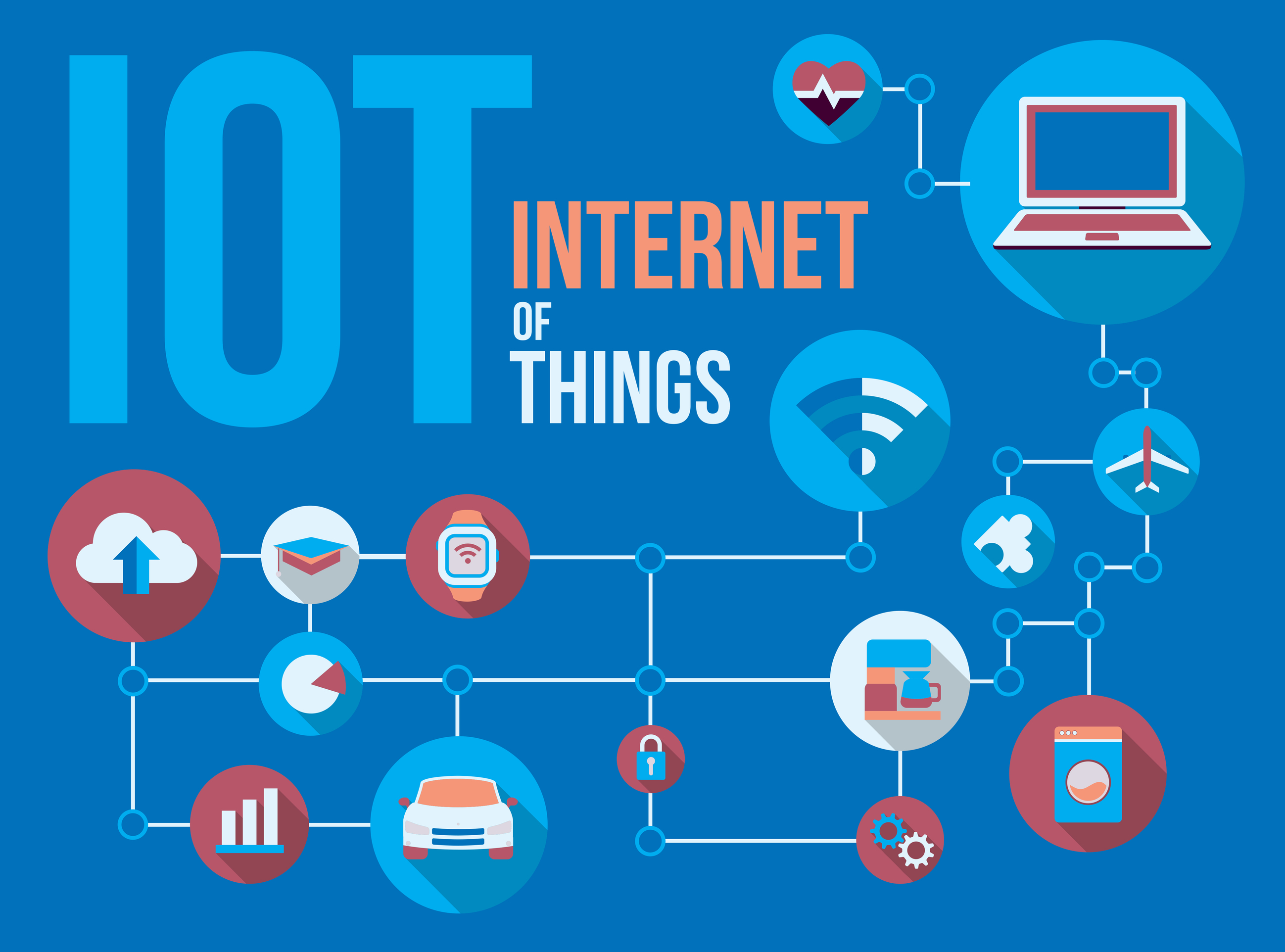The Internet of Things (IoT) has been around long enough that we are now seeing sub-sections of IoT appear as a way to differentiate where IoT applications are being used and how they are being used. One IoT segment that is growing quickly is the Consumer Internet of Things, also known as Consumer IoT or CIoT.
CIoT is exactly what you would expect from its name—the use If IoT technologies and devices in consumer applications and devices, such as smart homes and appliances.
Just how big is this market? In North America alone, the IoT consumer electronics market is expected to grow at a compound annual growth rate (CAGR) of 12.25 percent between 2017 and 2022, doubling in size from $90 billion to $180 billion.
This makes the Consumer IoT market an appealing one for many companies. To support you in your endeavors in the Consumer IoT market, we provide an overview of the most common use cases in CIoT, discuss some of the most current trends, and address what we consider to be the biggest area of concern with this segment of IoT—data privacy and security.
Consumer IoT devices
There are many IoT consumer electronics and products on the market today (too many for us to address here), but the top Consumer IoT devices are worth a mention.
The top three CIoT use cases are:
1. The smart home market
The smart home market is the fastest-growing CIoT area, expected to grow from $31.4 billion in 2018 to $53.4 billion by 2022. This includes several areas, such as home security, comfort and lighting, energy management, smart appliances, connectivity, and home entertainment.
Consumers typically step into the smart home market through smart thermostats or smart home security systems. But there is a lot of room for potential growth here, as many consumers are still learning about these types of IoT products and the value they can add to their homes and quality of life.
Consumers can now seamlessly manage all aspects of their smart home. However, security is a major concern for the smart home market. Even nontechnical consumers have had enough media exposure about “hacked” devices to be hesitant to purchase a connected device if they do not feel that security has been adequately addressed by the manufacturer.
2. Wearables
Wearables are the most common application of these devices. Smartwatches and Fitbits are being used by consumers to track exercise, heart rate, and calories expended to monitor their health and fitness.
Management of text messages and voice calls from smartwatches takes these devices beyond fitness, letting wearers stay on top of communications with work and family without needing a smartphone. Other wearables include smart glasses, and even fabrics that can store data about the user and their environment.
Wearables rely on low-power sensors that can capture data while only using a small amount of battery power. Low-power hardware and software design and built-in sensors are the cornerstone of the growth of the wearables market.
3. Asset monitoring
CIoT technology allows consumers to track their assets. Pet tracking has become popular, as owners enjoy being able to monitor their pet’s location remotely. This can be done over longer distances where low-power wide area networks (LPWANs) provide coverage for IoT devices.
Trackers and tags have also been created for consumers’ smartphones and car keys, helping people keep track of these commonly misplaced items. Trackers have extremely low-power designs and are meant to consume very little power, and consequently provide very little information until they are needed for location purposes.
Trends in the Consumer IoT market
As the CIoT market continues to grow and evolve, certain trends are emerging. Companies that capitalize on these trends can increase revenue, gaining a stronger foothold in the CIOT market.
Four of the biggest trends are:
1. Voice control
Voice is becoming the most common way for users to interact with their IoT consumer devices. Voice recognition technology continues to improve, increasing accuracy and the ability to interpret natural inflections in tone.
Voice control allows consumers to engage with IoT devices in new ways. Many players are rushing to offer this service by integrating with Amazon Alexa and Google Home, leaders in the market.
Consumers’ preference for voice control will continue to encourage manufacturers to offer this feature. There is little reason to reinvent the voice control wheel; voice control in systems should build on one of these existing technologies.
2. Merging of healthcare with personal issues
As wearables become a mainstay in the lives of many consumers, the line between licensed medical devices and personal “wellness” devices is blurring. Consumers are gaining more control over their health with the ability to track diet and monitor vitals such as heart rate and blood glucose levels. IoT devices can also be used to track medication.
This information can be shared with healthcare providers and insurers, giving consumers greater control over their health and giving providers more detailed information on patients.
CIoT opens up whole new remote care possibilities, and reduces the need for a number of in-office visits. This saves money for consumers and insurance companies.
For more information on how IoT medical devices are revolutionizing healthcare, check out our blog.
3. Drive towards an ecosystem
The smart home market is still largely made up of standalone products. But an ecosystem is emerging that will make the management and use of smart home devices simpler and more efficient. This will increase smart home adoption.
The main players here are Amazon Alexa, Google Home, and Apple Siri. It remains to be seen which company will be the first to offer a truly seamless and overarching solution.
4. The rise of edge computing (Fog)
The IoT environment has traditionally consisted of edge devices and the cloud. Data have been transferred to the cloud by the edge devices, where the data are processed.
But it is also possible to process more data in the edge device itself; this new processing area is now being referred to as “The Fog.” All, or just a portion, of the data can be sent to the cloud after processing is complete. This reduces network traffic and allows for faster data processing.
Data privacy and security
With CIoT comes a big responsibility around data privacy and security. Massive amounts of personal data, such as location, security settings, and personal health information, are at risk if proper security measures are not put into place.
Most CIoT devices are delivered with a weak password. Many consumers do not take the time to change this original password. This leaves these devices vulnerable to attack.
New and pending rules and regulations need to be considered when creating devices for the CIoT market. The General Data Protection Regulation (GDPR) is a European Union regulation for data privacy. It impacts any company doing business with an EU citizen or anyone who is physically in an EU member country.
GDPR does impact consumer IoT devices such as smart TVs, refrigerators, and home security systems. IoT service providers need to adhere to GDPR regulations concerning consent for data collection and storage of personal data for the affected CIoT devices.
A new International Standards Organization (ISO) Project Committee is developing a new standard aimed at correcting issues with consumer data privacy and security. The standard—privacy by design for consumer goods and services—aims to ensure that strong privacy controls are built into consumer products from the start and that security is maintained over the lifecycle of the product.
This standard is aimed at UK businesses, and is an example of the expected increase in data privacy and security regulation around CIoT devices. It is important to stay aware of these regulations and standards as they continue to develop to make sure your products meet all necessary security requirements.
The Consumer IoT market holds great revenue potential for manufacturers, with opportunities in smart home appliances and gadgets, wearables, and asset monitoring. Make sure your device stands out by leveraging the latest trends, such as voice control and the drive towards a unified smart home solution. As devices develop, security and data privacy must stay in the forefront of developers’ minds, especially as regulations continue to emerge. It is always a smart business decision to seek expert advice on IoT application development if you do not have—or wish to supplement—your in-house expertise.

